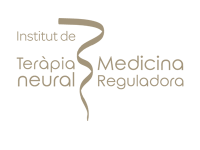20 Minutes
CONTENTS
A phobia is an implausible and overwhelming fear response. An individual suffering from a phobia may feel a strong sense of dread or panic when confronted with the cause of the fear. Fear can be directed toward a specific situation, place, or item. In contrast to generalized anxiety disorders, phobias are typically associated with something distinct.
A phobia’s effects might range from mildly unpleasant to profoundly crippling. Individuals suffering from phobias frequently recognize their dread is unjustified (have insight), but are powerless to change it. These anxieties can cause disruptions at the workplace, school, and interpersonal relationships.
The various components of any type of phobia include sensations of overwhelming anxiousness when a person is being confronted with the source of fear, a conviction that the source of one’s fear should be avoided at all costs, being unable to function normally in the presence of the trigger, and acknowledgment of the fear’s irrationality, obtuseness, and exaggeration, along with an incapacity to manage the emotions. The common symptoms are irregular breathing, sweating, rapid heartbeat, a sense of suffocation, tightness of the chest, dizziness, nausea, and disorientation. The American Psychiatric Association (APA) recognizes three distinct forms of phobia. These include the following:
- Specific phobia: This is an abnormally strong, irrational fear of a certain trigger.
- Social anxiety, or social phobia: This is a serious fear of public embarrassment and being singled out or assessed in a social environment by others. For someone who suffers from social anxiety, the prospect of huge social gatherings is daunting. This is not synonymous with shyness.
- Agoraphobia: This is an anxiety-related situation from which a person would be unable to flee in the event of intense panics, such as being in an elevator or being outside the home. It is frequently misinterpreted as a fear of open spaces, although it can also refer to being confined to a small area, such as an elevator, or using public transportation. Individuals who suffer from agoraphobia are at a greater risk of developing panic disorder.
A phobia is an implausible and overwhelming fear response. An individual suffering from a phobia may feel a strong sense of dread or panic when confronted with the cause of the fear. Fear can be directed toward a specific situation, place, or item. In contrast to generalized anxiety disorders, phobias are typically associated with something distinct.
A phobia’s effects might range from mildly unpleasant to profoundly crippling. Individuals suffering from phobias frequently recognize their dread is unjustified (have insight), but are powerless to change it. These anxieties can cause disruptions at the workplace, school, and interpersonal relationships.
The various components of any type of phobia include sensations of overwhelming anxiousness when a person is being confronted with the source of fear, a conviction that the source of one’s fear should be avoided at all costs, being unable to function normally in the presence of the trigger, and acknowledgment of the fear’s irrationality, obtuseness, and exaggeration, along with an incapacity to manage the emotions. The common symptoms are irregular breathing, sweating, rapid heartbeat, a sense of suffocation, tightness of the chest, dizziness, nausea, and disorientation.
The American Psychiatric Association (APA) recognizes three distinct forms of phobia. These include the following:
- Specific phobia: This is an abnormally strong, irrational fear of a certain trigger.
- Social anxiety, or social phobia: This is a serious fear of public embarrassment and being singled out or assessed in a social environment by others. For someone who suffers from social anxiety, the prospect of huge social gatherings is daunting. This is not synonymous with shyness.
- Agoraphobia: This is an anxiety-related situation from which a person would be unable to flee in the event of intense panics, such as being in an elevator or being outside the home. It is frequently misinterpreted as a fear of open spaces, although it can also refer to being confined to a small area, such as an elevator, or using public transportation. Individuals who suffer from agoraphobia are at a greater risk of developing panic disorder.
A UNIQUE METHOD TREATING Phobia
a successful and proven concept focusing on underlying causesPhobia TREATMENT LASTING APPROACH
0 Before
Send Admission Request
0 Before
Define Treatment Goals
1 week
Assessments & Detox
1-4 week
Psychological & Holistic Therapy
4 week
Family Therapy
5-8 week
Aftercare
12+ week
Refresher Visit
Phobia Insights
latest news & research on Phobia
Megalophobia
Megalophobia or the fear of large things such as large objects, gigantic structures, or animals, is one of the specific phobias in the family of anxiety disorders
read moreAutophobia
Autophobia is a specific phobia characterized by an intense and irrational fear of being alone.
read moreAtychiphobia
Atychiphobia is a type of anxiety disorder that is characterized by an intense fear of failure or the possibility of failure
read more































































